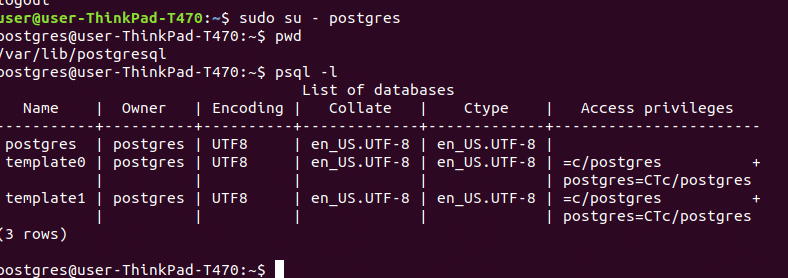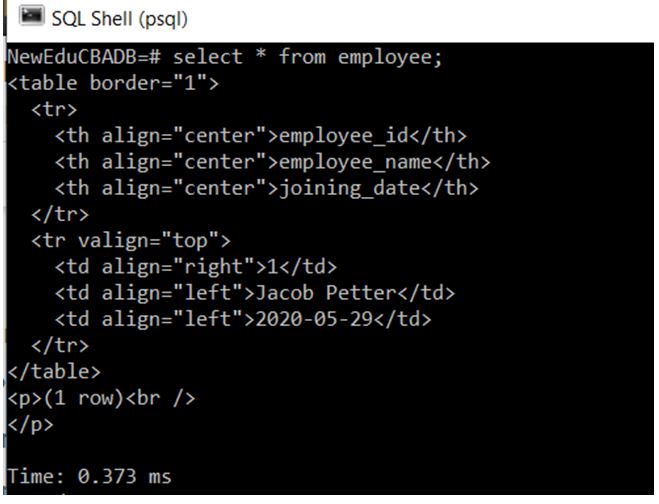

You do not specify an object name, or a partial name, all objects in the database will be displayed. The object you specify may be any defined aggregate, function, operator, relation, rule, or trigger. The general database object display command it is used to display the descriptions of any specified database If you specify a parameter following the slash command, it will display only the list ofĪggregate functions whose names begin with the aggregate_name pattern in a case-insensitive comparison. The aggregate display command with it, you may retrieve the list of the connected database's aggregate functions, and When executed without a specified relation, itĭisplays each of the relations available within the currently connected database. Relation's columns, types, and special attributes or defaults. When issued, the command will display all of the Relation you specify may be an index, sequence, table, or view. The general display command it is used to view various pieces of information about a specified relation. The toggle expanded command this toggles expanded row formatting and off. The table attribute command this defines extra table attributes you wish to be inserted into the table tags of table dataĭisplaying while in HTML formatting mode. The table information command this toggles the display of optional table information, and is equivalent to The HTML output command this toggles between HTML output formatting and the default aligned formatting, and isĮquivalent to successive uses of \pset format HTML and \pset format aligned. The field delimiter command this sets the field delimiter when using the unaligned formatting mode, and is equivalent to Result set, and is equivalent to \pset title.

The query title command this allows you to set a title that will be displayed at the top of any displayed To successive uses of \pset format aligned and \pset format unaligned.

The align command this toggles psql between aligned and unaligned mode. Wish to use a paging program other than more (such as less). PAGER environment variable in your shell before starting psql if you This parameter toggles off and on the use of a pager for outputting table data. If you wish to define more than a singleĪttribute, be sure to enclose them within double-quotes in a single value. This parameter is for use with the HTML format mode use it to define any table attributes you wish toīe included upon formatting table output within the tag (e.g., width,Ĭellpadding, cellspacing). Use a pair of sequential apostrophes ( '') to set to an empty string. This parameter is used to attach a title to any subsequently printed titles. Or if you want to see additional characteristics about the table, such as headers and comments. This parameter lets you specify whether you want to see table data only (row results), By default this is the newline character ( \n). This parameter specifies the record delimiter (to separate rows) when working in unalignedįormatting mode. Want to use this to set the delimiter to a more commonly used delimiter, such as the tab It is set to the pipe symbol ( |) by default. This parameter accepts the delimiter to separate column values when working in the unalignedįormatting mode. To set it to some other value, enclose that Ordinarily, that string is set to nothing. The string you wish to have displayed to represent a null should follow the word This parameter allows you to set the string that is displayed to you when a null field is displayed. Tell psql to format all output into two columns, with the column name on the left, and data on the

If you have problems with dataīeing displayed off the screen, or wrapping around in an illegible fashion, try using this option. Setting this option will toggle between regular and extended format. Generally, the higher this number is, the larger (or more pronounced) For example, when outputting in HTML mode, this directly affects the The HTML and LaTeX modes output tables meant for inclusion in HTML and LaTeXĭepending on the formatting mode, this option will make various changes to the borders used withinĭisplayed tables. Unaligned will set output to be printed all on one line, separated by theĬurrent character delimiter. Aligned is theĭefault setting, for readability. This parameter lets you set the output format to aligned,


 0 kommentar(er)
0 kommentar(er)
